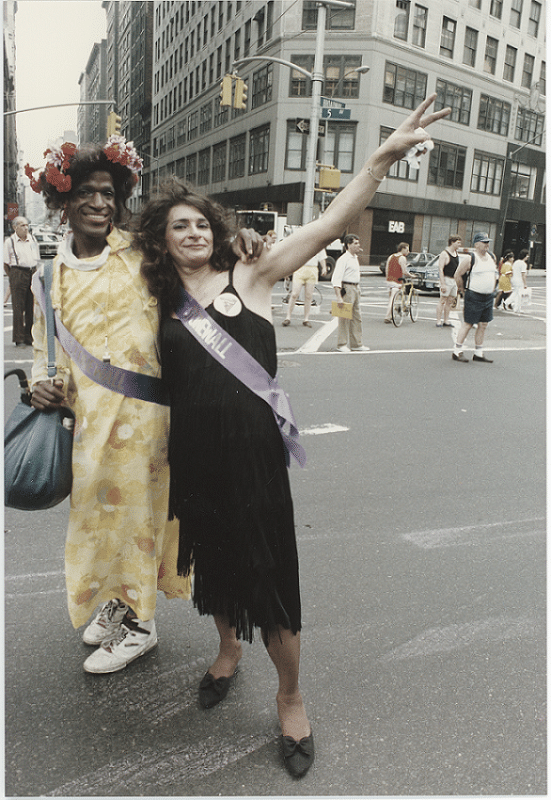Context- LGBTQIA+ Life in NYC, 1969-79
The 1980s-90s in hallmarked a time of resilience and resistance within LGBTQIA+/queer communities around the world. More specifically, queer life at NYU and the Polytechnic Institute was challenging, as students and faculty navigated a difficult sociopolitical climate whilst seeking acceptance and visibility. This era followed the Stonewall Uprising at Greenwich Village in 1969, which sparked the modern LGBTQIA+ movement and set precedence for activism that continued to shape New York City and beyond. Transgender figures based in NYC such as Marsha P. Johnson and Sylvia Rivera impacted communities through service, protest, and advocacy for marginalized groups, most especially youth who were homeless or those affected by the HIV/AIDS crisis. This set precendence for extremely important NYC-based queer activism throughout the 1980s, such as ACT UP (AIDS Coalition to Unleash Power) (4).
Throughout the 1980s and 1990s, queer life in New York City was characterized by both flourishing activism and major challenges as the AIDS/HIV epidemic proliferated-- especially in academic environments. The experiences of LGBTQIA+ groups and students at New York University (Manhattan) and Polytechnic University (Brooklyn) throughout this crucial period are compared in this research. Through exploring how queer individuals dealt with visibility, hardship, and community-building in the wake of activism such as the Stonewall Uprising and formation of advocacy groups such as ACT UP and during the AIDS epidemic, this research highlights the ways these communities mobilized for change, advocated for their rights, and forged supportive networks despite widespread discrimination and institutional neglect.

Marsha P. Johnson and Sylvia Rivera, ca. 1989-1990. The Rudy Grillo Collection, Rudy Grillo / LGBT Community Center Archive.
In 1976, the first NYU queer student life alliance formed, originally named the Gay People's Union. The GPU became a safe space for all students, and a central point for student advocacy, education, and building community (9).

Entrance to the Gay People Union during the 1970s. Courtesy of New York University Archives
The GPU led initiatives to combat institutional homophobia by 1980, including contesting NYU's affiliation with the Department of Defense for its homophobic discriminatory practices in recruitment. Students had called on NYU to cut its connections with the Department of Defense, and the University Senate met, ultimately deciding to continue their partnership in fear of losing $2 million dollars in funding, which is currently $7.3 million dollars in today's economy (6). This was a large issue widely covered by Washington Square News and even made headlines nationally. This debate over gay rights and equal opportunity at NYU paved the way for student activism in the 1980s.

Gay People's Union meets with the University Senate in May 1982. Photo Courtesy of New York University Archives.

NYU students protesting for equal opportunity and affirmative action. Photo Courtesy of New York University Archives.